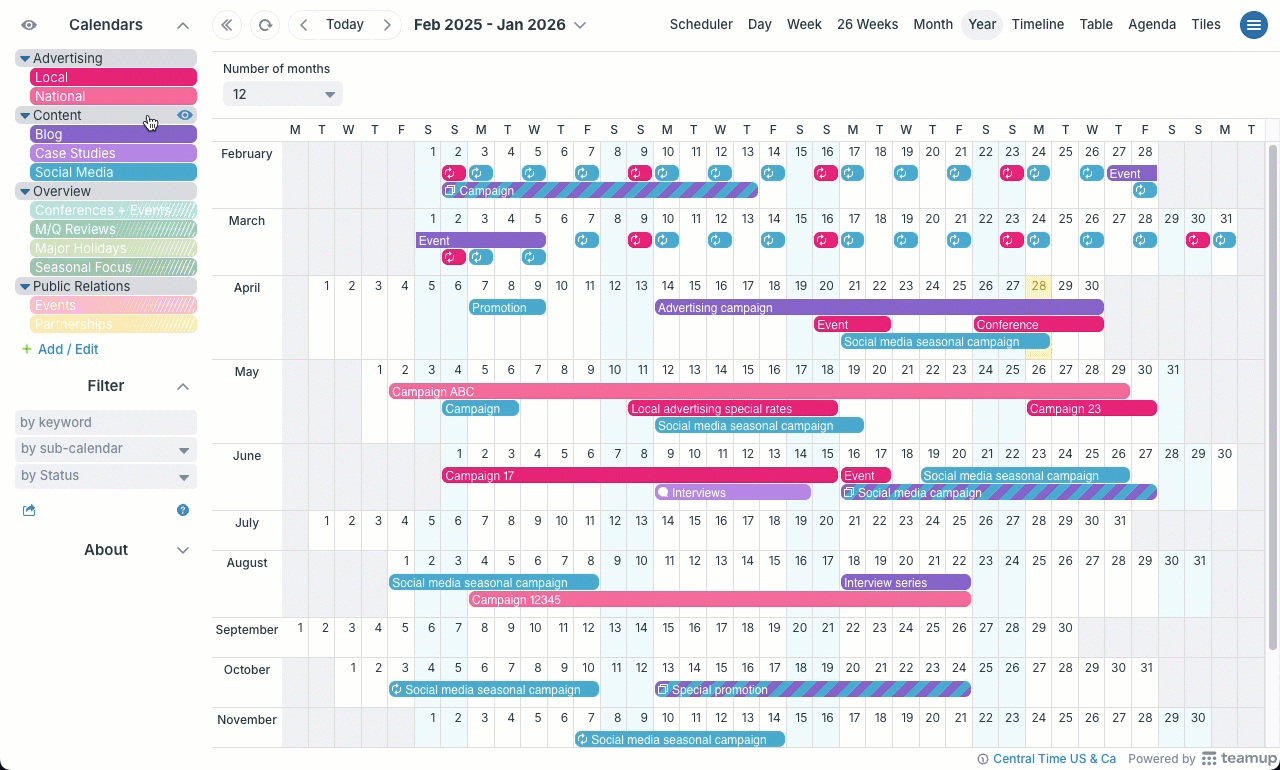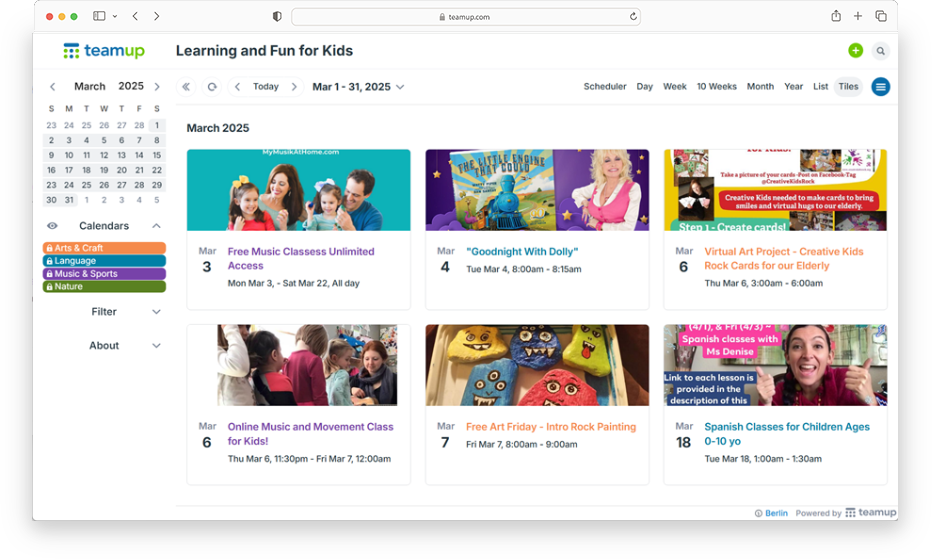ℹ️ Teamup has 12 unique calendar views (browser); calendar administrators can choose a default calendar view and adjust other calendar view configurations. For calendar views on the Teamup app, see this article.
12 Calendar views (browser)
On a browser, Teamup Calendar includes 12 calendar views:
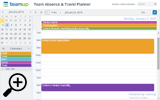
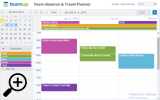
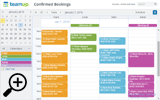
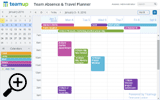

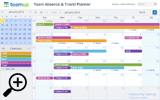
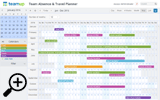
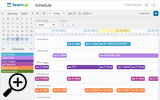
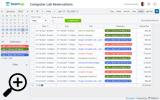
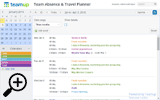
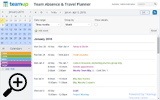
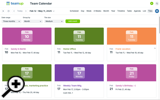
Calendar administrators can control which calendar views are available, set a default calendar view, and adjust specific settings for different calendar views.
On the Teamup app, four calendar views are available (list, day, week, and month) and do not have the same configuration options as calendar views on a browser.
Configure calendar views
Reminder: to access calendar settings, you must have administrator access and use a browser. Calendar settings are not the same as user account settings.
General configuration options
Go to Settings > Calendar Views to adjust the calendar view configuration options.
Enable or disable calendar views
Not every use case needs all calendar views. To hide a calendar view that is not needed, toggle it off. You can enable the view anytime if needed.
Default view
Select the calendar view that is displayed when the calendar initially loads.
Calendar resolution
Adjust the time intervals shown on the calendar (5 minutes to 60 minutes). If you schedule mostly short appointments, it may be helpful to increase the calendar grid resolution.
Hide weekends
If your planning is concerned with weekdays only, you can hide weekend days to optimize the use of screen space. This setting applies to week view, multi-week view, and month view.
Specific settings for different calendar views
Some calendar views support specific configuration options.
Go to Settings > Calendar Views, then scroll to the appropriate view to configure it.
- Multi-day view
- Set the number of days (from 2 to 6) for multi-day view.
- Multi-week view
- Set the number of weeks (from 1 to 12) for multi-week view.
- Year view
- Set the number of months to show by default in the year view. You can still adjust the number of months shown when using the year calendar view.
- Scheduler view
- Set the default date range, number of days, weeks, or months shown, and default zoom level.
- Table view
- Set options for default date range, wrapping content, and event time sums. Select which columns (event fields) are shown by default in table view.
- Tiles view
- Choose the default date range and grouping and set the default tile size.
- Timeline view
- Choose between day, multi-day, week, or multi-week range, and set the default zoom range.
- Agenda view
- Set the default date range and choose whether or not to show details by default.
- List view
- Set the default date range, the default grouping, and whether or not to show details by default.
Customizing with link parameters
Only calendar administrators can configure calendar views in the settings. However, any Teamup user can use calendar link parameters. Calendar link parameters are key=value pairs that are added to the end of a calendar link. They allow you customize some aspects of your calendar views. Learn more about link parameters.
Examples of calendar views
The best calendar views for you will depend on your use case, needs, and calendar habits. If your events are mostly all-day events, the month or multi-week view may be more appropriate. The day or week view can be more convenient for time-specific events. See tips on using fewer keystrokes when entering calendar data.
Below are a few examples of Teamup calendar views in action.
1. Multi-week view

- Show between 1 and 53 weeks. You can view and scroll through a whole year’s events on one screen.
- Show 4 weeks as a useful alternative to the standard monthly view; the current week (rather than the first week of the month) will always show at the top.
- Quickly create multi-day events: click and drag over the relevant dates, and release the mouse to open the event editor. See more here.
- Easily plan long-term projects that do not fit neatly into a single month or overseeing a schedule of events that may span a longer period of time, such as community events, contests, organizational schedule, and travel.
2. Scheduler view

- Scheduler View displays each sub-calendar in its own column, making it easy to compare individual schedules and move events from one sub-calendar to another.
- Show a single day up to 5 years, with adjustable resolution.
- Automatically hide empty columns.
- Drag and drop any event from one sub-calendar to another.
- Quickly compare availability when managing multiple resources, such as spaces; the column format makes it easy by showing each sub-calendar’s events side by side.
- Use as a task or project manager: view the status of various tasks or team members for the day, week, or month.

Adjust the date range and resolution to focus on a single day in detail.
3. List and Agenda views
- List and Agenda view display the event details and images right in the calendar view. You do not need to click an event to see the details as you would in another calendar view.
- Show or hide all the details of all the events on your screen.
- If the event is assigned to more than one sub-calendar, the event details included will also list the sub-calendars assigned to the event.
- In List view, choose to group the events by the week or month.
- Agenda view shows each day’s agenda. You can choose a date range from one day to one year and choose whether or not to show event details.
- These two views scale well vertically regardless of how many overlapping events you may have on display. They also make it easy to save calendar data in your preferred time range (from one day up to one year at a time) as a PDF file.
4. Year view
- Year view works well if you are planning long-term events and the number of events per day are small.
- The yearly view also functions as a multi-month view. You can choose the number of months to display, from 1 to 12.
- A year view is helpful for tracking times of heavy workloads or intense scheduling; you can see patterns and avoid overloading your calendar during the busier seasons.
- A year view is also helpful for showing events that last for multiple days, weeks, or months, such as contests with deadlines, projects, travel, and developmental sprints.
5. Tiles view
- Tiles view shows each event in its own tile with the basic event details displayed.
- If the event contains an image, it will be displayed in the event tile. If there are multiple images, the first image will be used for the event tile.
- Tile size can be set to small, medium, or large.
- Adjust the date range and group events by week or month.
- Tiles view is especially great for embedded calendars, presenting a visually appealing and streamlined view of events.
6. Timeline view
- Timeline view shows each sub-calendar in its own row.
- Timeline view displays the time horizontally and can expand to multiple days, which is especially helpful to see the availability of a specific resource or any scheduling needs.
- Set the date range from a single day to multiple weeks and adjust the zoom level for the amount of detail you need.
- Drag and drop across dates and sub-calendars.
- Timeline view makes it easy to find available time slots across team members or any other resources.
Keywords: multiple calendar views, quarterly calendar, annual calendar, biweekly planner, timeline.



